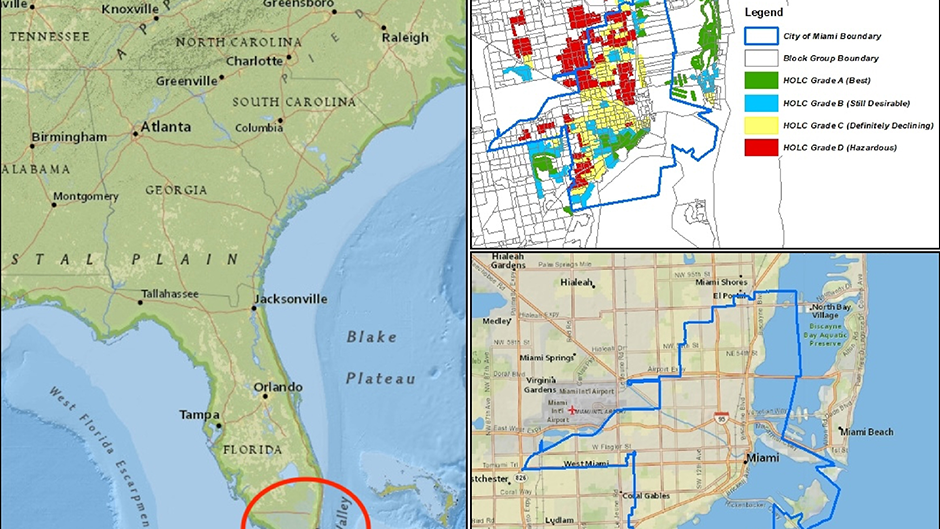A history of housing discrimination in the neighborhood where a person lives can impact whether they register as a Democrat or a Republican, according to a new University of Miami study.
Haoluan Wang, an economist and assistant professor in the Department of Geography and Sustainable Development at the University of Miami’s College of Arts and Sciences, found that residing in historically redlined neighborhoods affects the political beliefs of Miami-Dade residents.
The term redlining describes the practice of designating neighborhoods as risky investments based on the race or ethnicity of their residents and denying the inhabitants mortgage loans and other services. Although redlining was outlawed in the late 1960s, it has played a role in shaping many U.S. cities. While its long-lasting impacts on economic and social issues, such as racial segregation, have been widely studied, its effects on political affiliation have not.
By comparing current voter registration data with redlining maps created by the government-sponsored Home Owners’ Loan Corporation (HOLC) in the 1930s, Wang was able to study the relationship between living in a historically redlined neighborhood and political party affiliation.
To do that, Wang geolocated each voter in Miami-Dade County using the address listed in voter registration records and superimposed the voter locations on HOLC redlining maps from the University of Richmond's Mapping Inequality database. Then, he estimated the likelihood that a resident of a historically redlined neighborhood was registered as a Democrat or a Republican, controlling for characteristics – such as age, race, and income – that research has shown influence political attitudes.

Haoluan Wang
Wang found that residents of neighborhoods that were historically redlined are more likely to be Democratic voters and less likely to be Republicans. He also discovered that neighborhoods with large percentages of Democratic voters are mainly concentrated in historically redlined areas. In other words, it appears that the experience of living in a historically redlined neighborhood influences political beliefs, and that redlining may have also contributed to the creation of neighborhoods where a majority of residents share the same party affiliation.
Wang’s results, published in the journal Political Geography, have implications for urban planning and for efforts to decrease political polarization.
“Where people live really matters in terms of their political beliefs and voting behavior,” Wang said. Since urban policies impact where people decide to move, he explained, infrastructure and development decisions can help to integrate historically redlined and non-redlined neighborhoods. “In order to avoid this type of political polarization, urban policy can play a big role,” Wang added.
To further investigate the relationship between redlining and political affiliation, Wang said, research analyzing additional U.S. cities beyond Miami is needed. The challenge, however, is obtaining the voter registration data. While the HOLC redlining maps exist for more than 200 cities, every state has different rules about who can request voter registration data and what that data contain.
For now, Wang hopes policymakers and community groups can use his findings in Miami-Dade County to inform urban planning decisions and encourage less political polarization and more political engagement.

